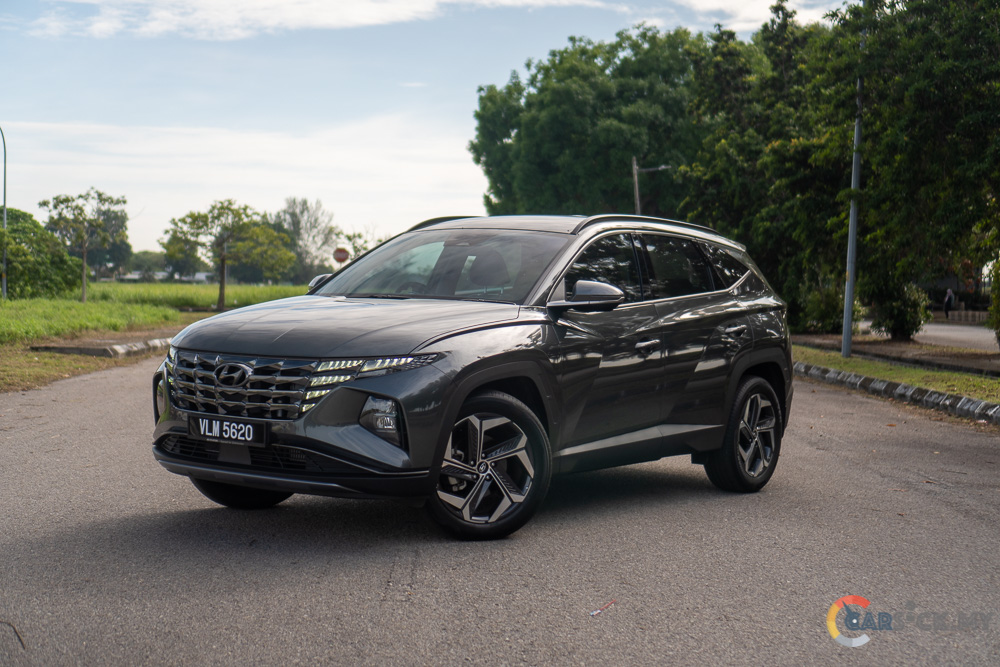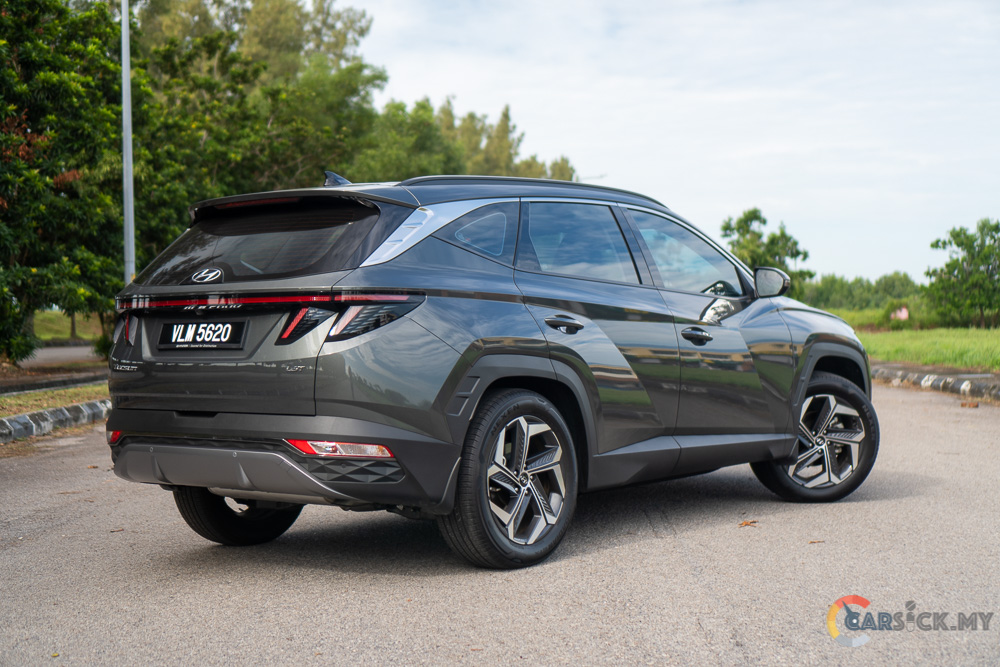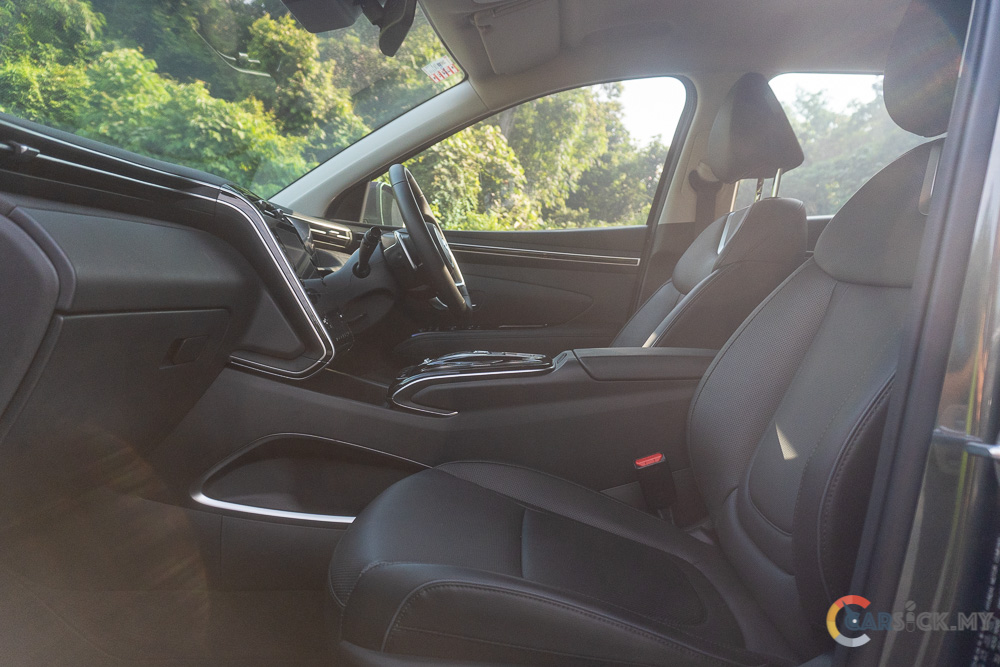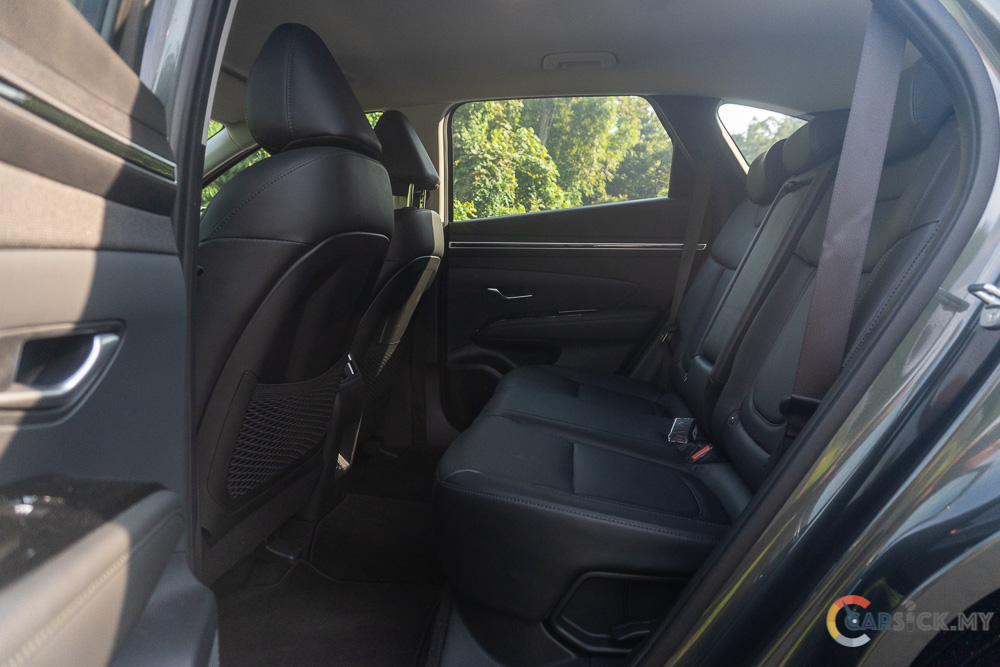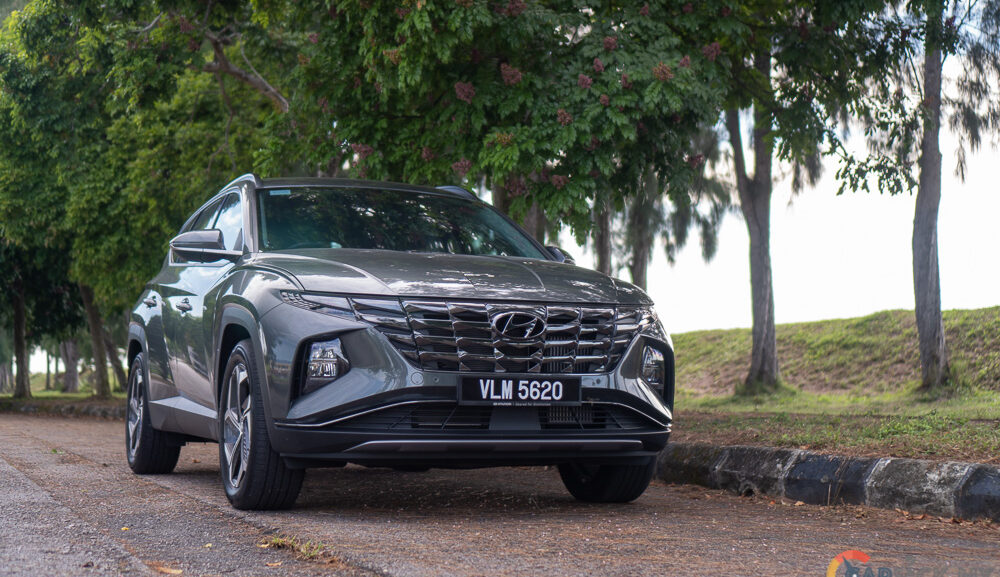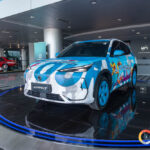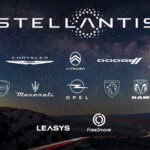The Hyundai Tucson entered the market with little fanfare. To be fair, this model has been available internationally for quite some time. While it’s new to Malaysia, it’s due for an update soon on the international stage. For now, let’s focus on the version available here in Malaysia. It comes in three different trim levels, and I’ll be reviewing the highest-spec Hyundai Tucson 1.6T Max variant. The question is whether this model has arrived too late, especially with Chinese brands flooding the market with cheaper SUVs in this segment.
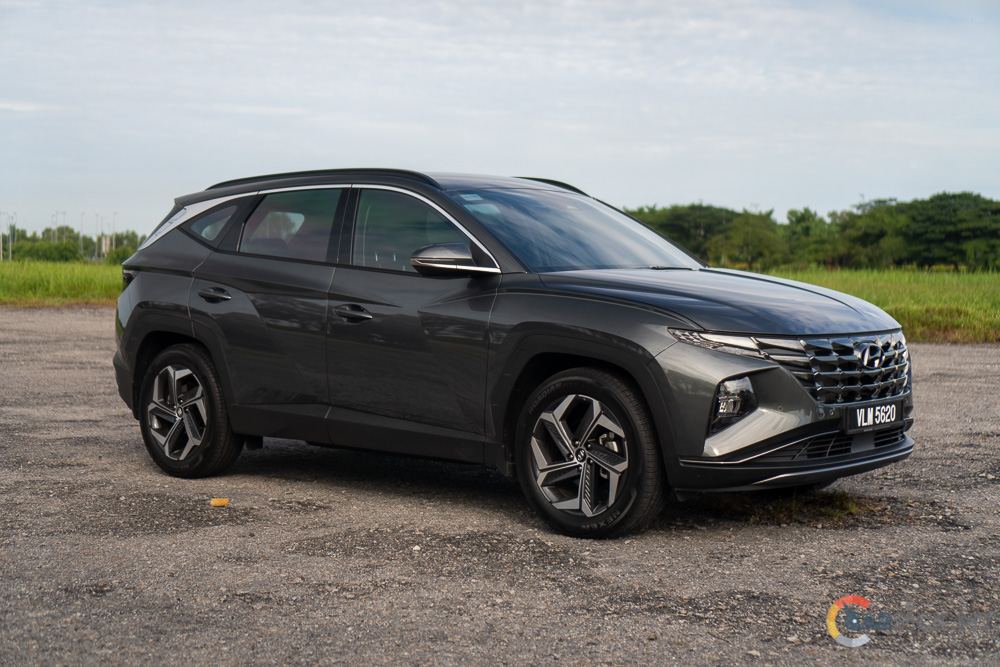
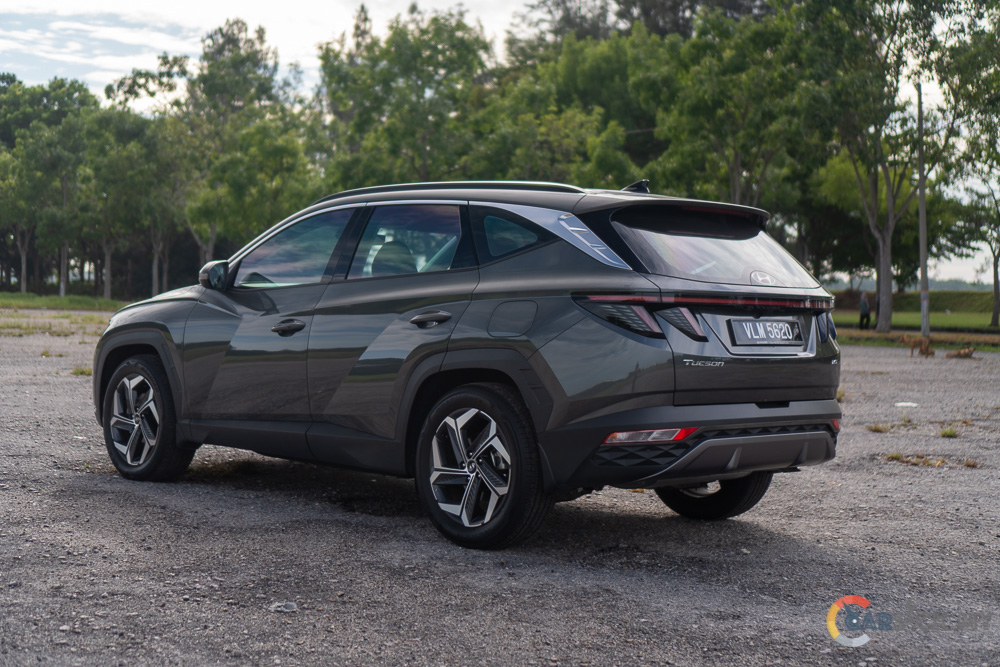 In recent years, Hyundai has been producing some eye-catching vehicles, and the Tucson is no exception. When it was launched, the Tucson looked futuristic without appearing awkward. In fact, it looked more futuristic than some EVs at the time. Even after a few years, the design still stands out, as few modern vehicles dare to embrace such bold styling. My favorite part of the car is the front. I love how Hyundai integrated the daytime running lights into the front grille. When the car is switched off, the lights blend seamlessly into the grille, giving the front a unique and sleek appearance.
In recent years, Hyundai has been producing some eye-catching vehicles, and the Tucson is no exception. When it was launched, the Tucson looked futuristic without appearing awkward. In fact, it looked more futuristic than some EVs at the time. Even after a few years, the design still stands out, as few modern vehicles dare to embrace such bold styling. My favorite part of the car is the front. I love how Hyundai integrated the daytime running lights into the front grille. When the car is switched off, the lights blend seamlessly into the grille, giving the front a unique and sleek appearance. 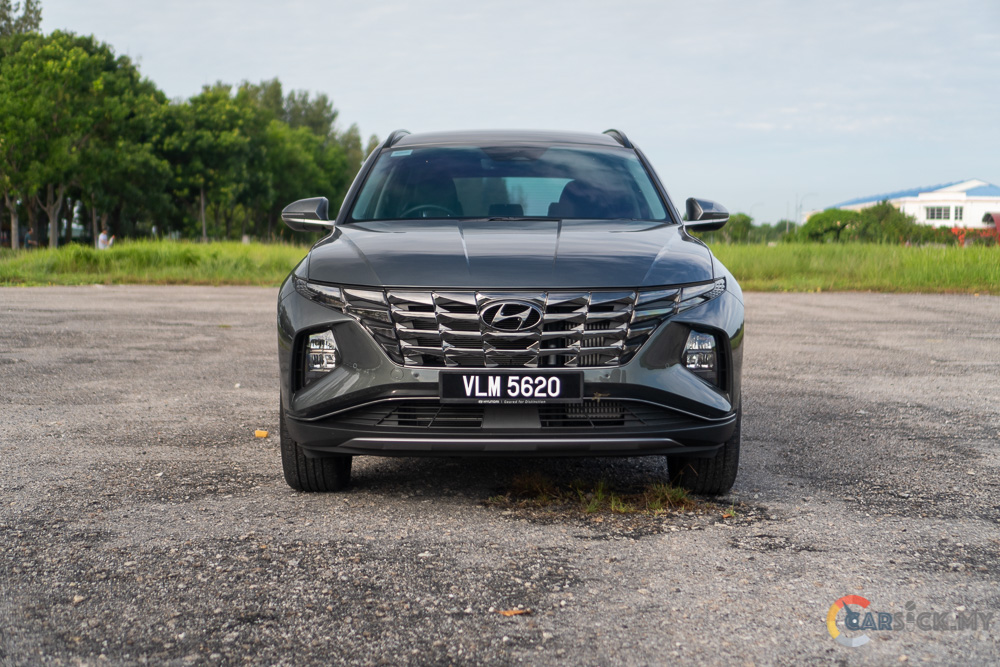
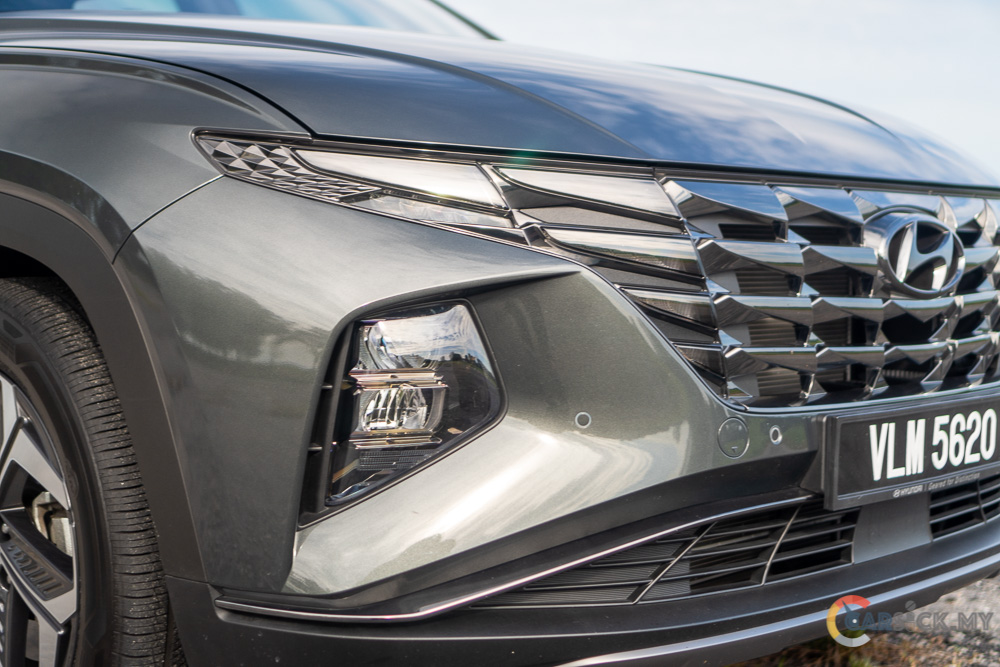
The headlights, positioned separately from the daytime running lights, are located lower down, near the bumper. While I don’t mind this design, I do wish the headlights shone a bit higher to improve visibility at night. On the plus side, they are quite bright, but they could benefit from a longer range. Moving to the side, the SUV features distinctive body lines. Some might find them a bit busy, but I think they complement the overall design.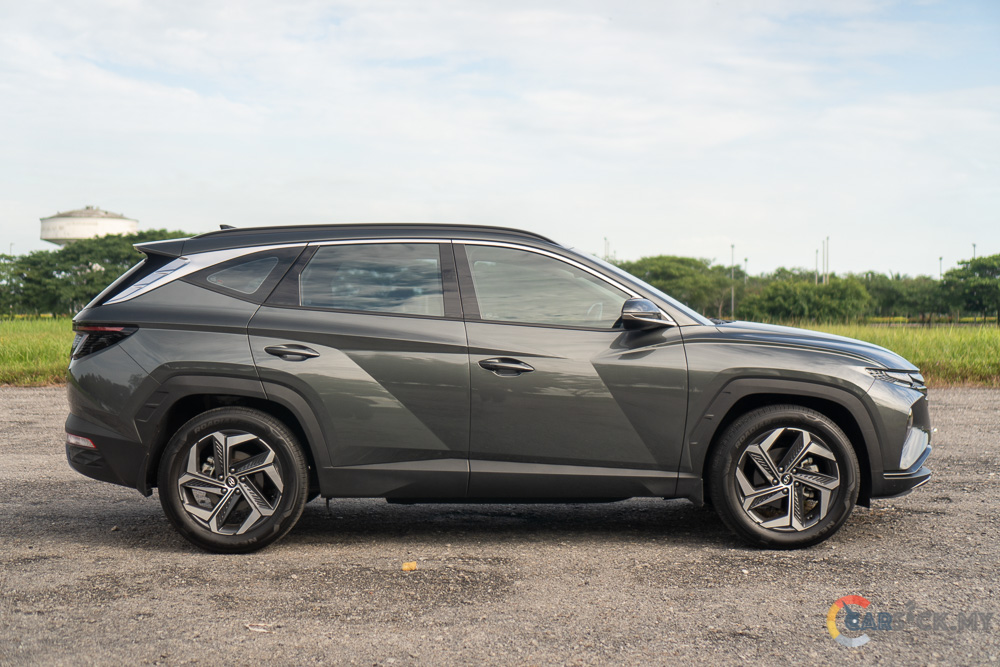
At the rear, the Tucson’s distinctive taillights, linked by a light bar, make it easily recognizable among other SUVs. The fully LED taillights add a modern touch. To preserve the taillights’ clean design, the rear indicators are positioned on the bumper, giving the back a more streamlined look. The Tucson rides on 19-inch rims wrapped in 235/55 R19 tires, which I think look great on this SUV. 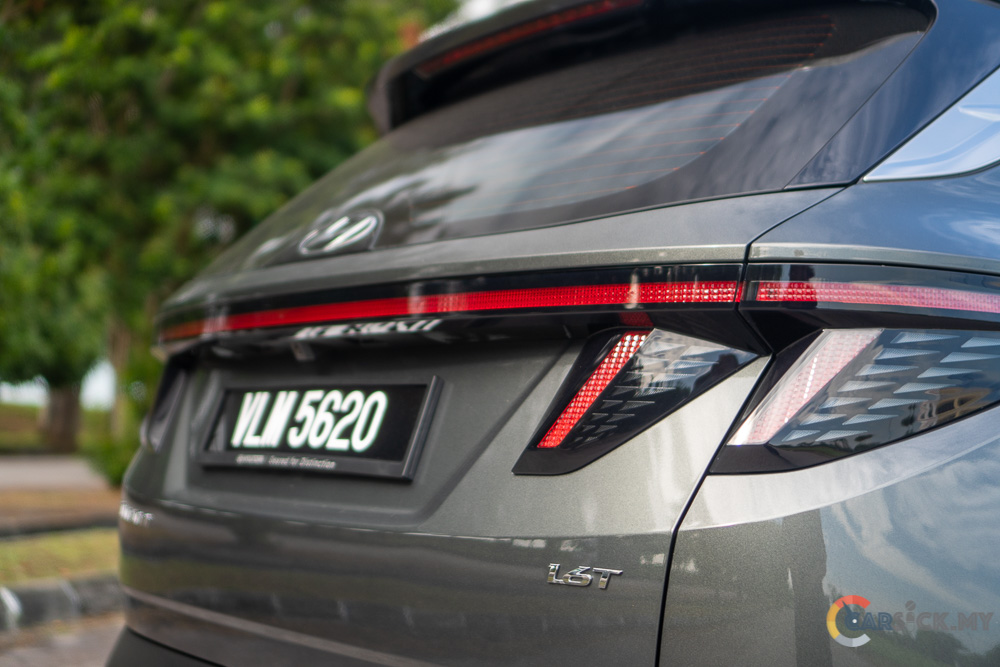
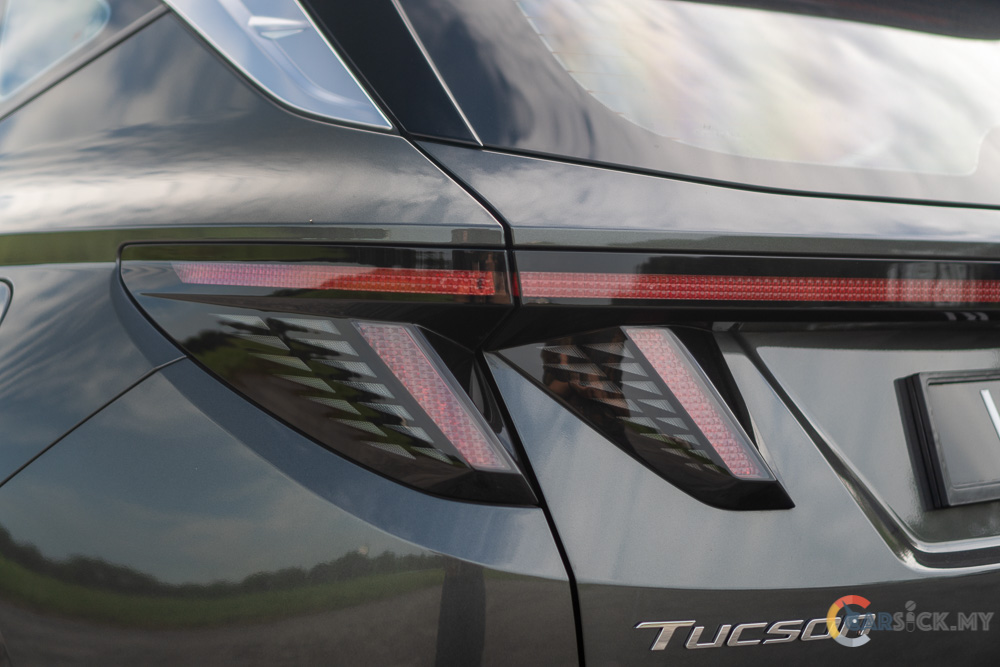
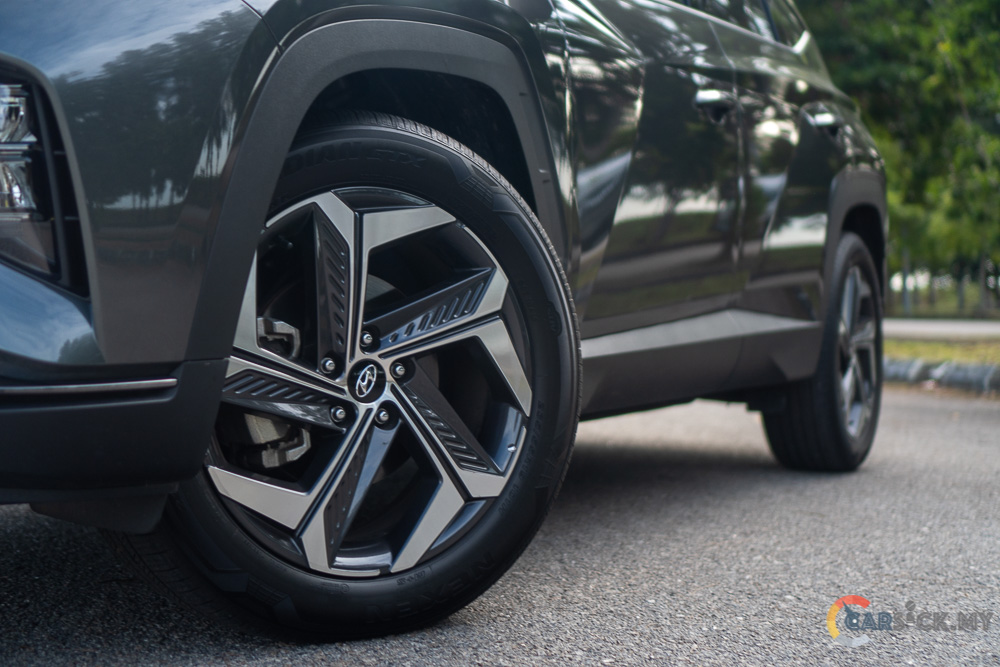
Unlike the bold exterior, the Tucson’s interior is more down-to-earth and conventional. Everything is where you’d expect it to be, making it easy to get familiar with the cabin. Hyundai has used plenty of soft-touch materials, giving the interior a somewhat premium feel. However, some of the plastics on the lower dashboard are a bit harder. At least the fit and finish are excellent, with no noticeable panel gaps. While simplicity can be good, certain dashboard elements feel outdated by modern standards.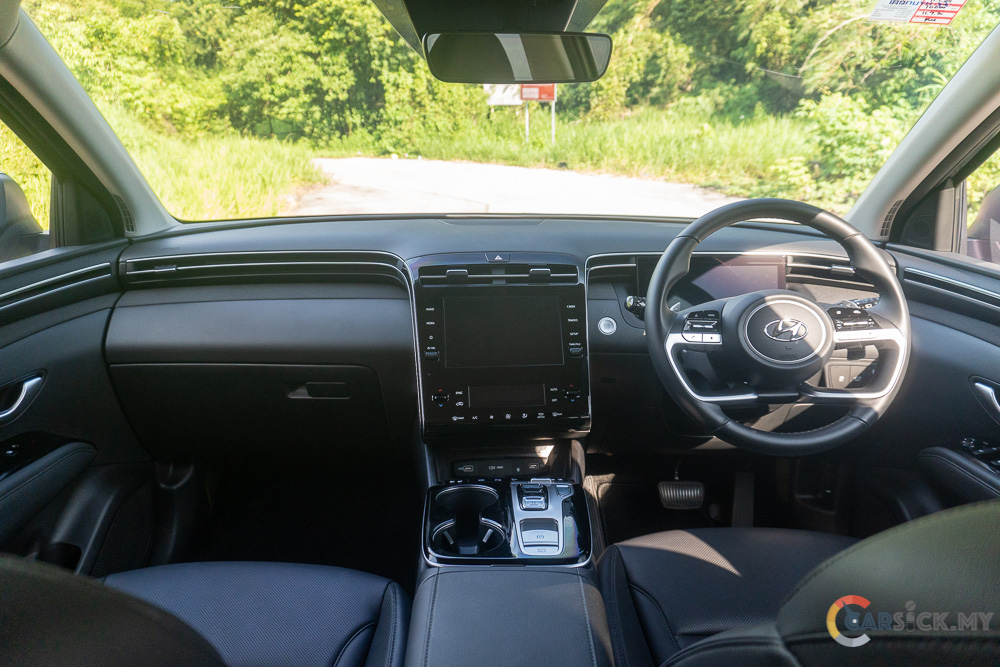
The main offender is the 8-inch infotainment screen, which feels small today. Although it still supports wireless Android Auto and Apple CarPlay, the screen’s size and resolution are underwhelming. On the plus side, the 6-speaker system linked to the infotainment unit delivers decent sound quality, making it easy to enjoy your favorite tunes. The 10.25-inch digital instrument cluster in front of the driver, shared among various Hyundai models, looks much sharper than the infotainment screen.
Sitting in the driver’s seat offers a commanding view of the road, and it’s easy to find a comfortable driving position. The ergo 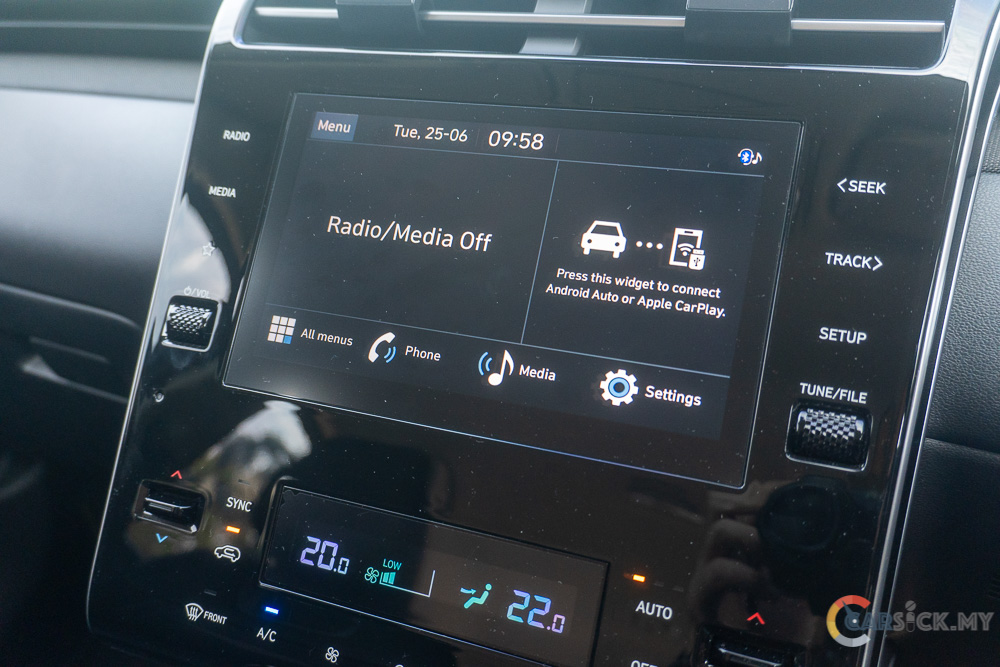
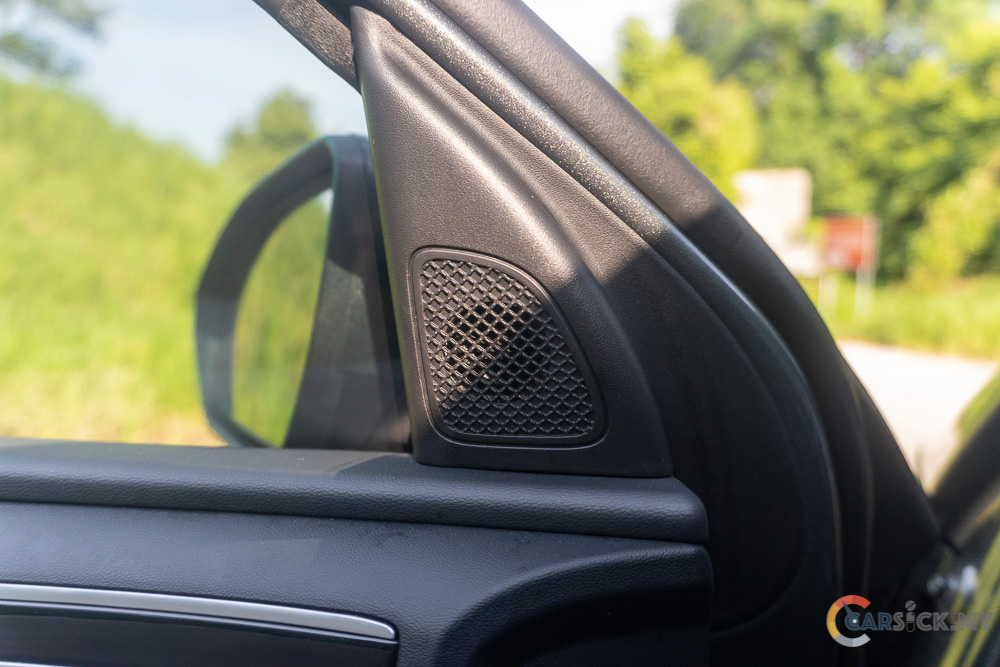 nomics are spot on, with all buttons and switches within easy reach. The cockpit-like feel, enhanced by the tall center console, makes everything feel close at hand. The center console also features push-button gear selectors, making gear selection intuitive. For added comfort, both front seats come with heating and cooling functions—welcome features in Malaysia’s hot climate.
nomics are spot on, with all buttons and switches within easy reach. The cockpit-like feel, enhanced by the tall center console, makes everything feel close at hand. The center console also features push-button gear selectors, making gear selection intuitive. For added comfort, both front seats come with heating and cooling functions—welcome features in Malaysia’s hot climate. 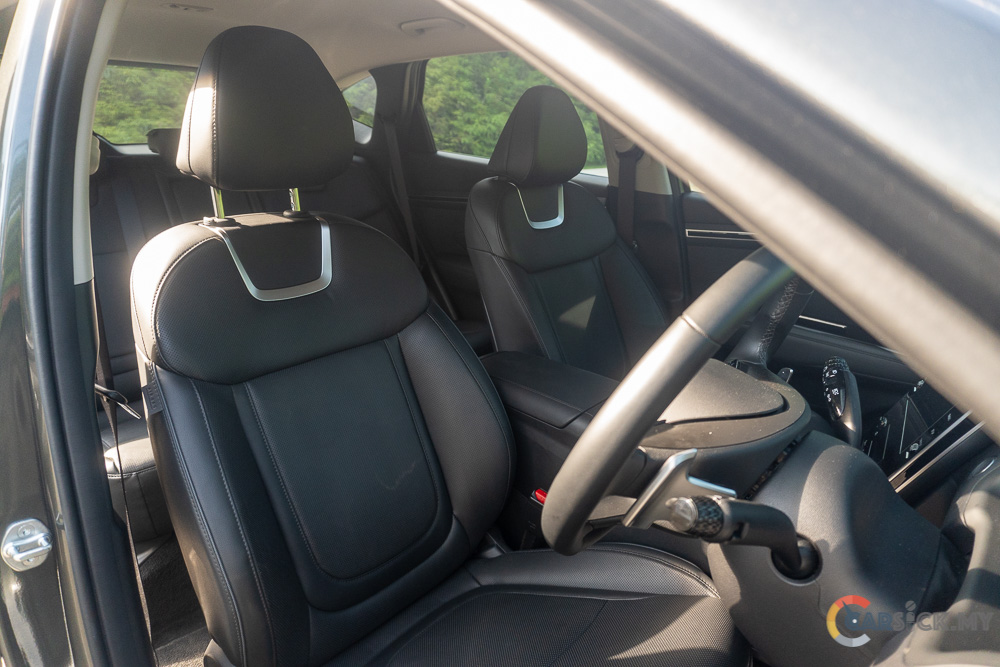
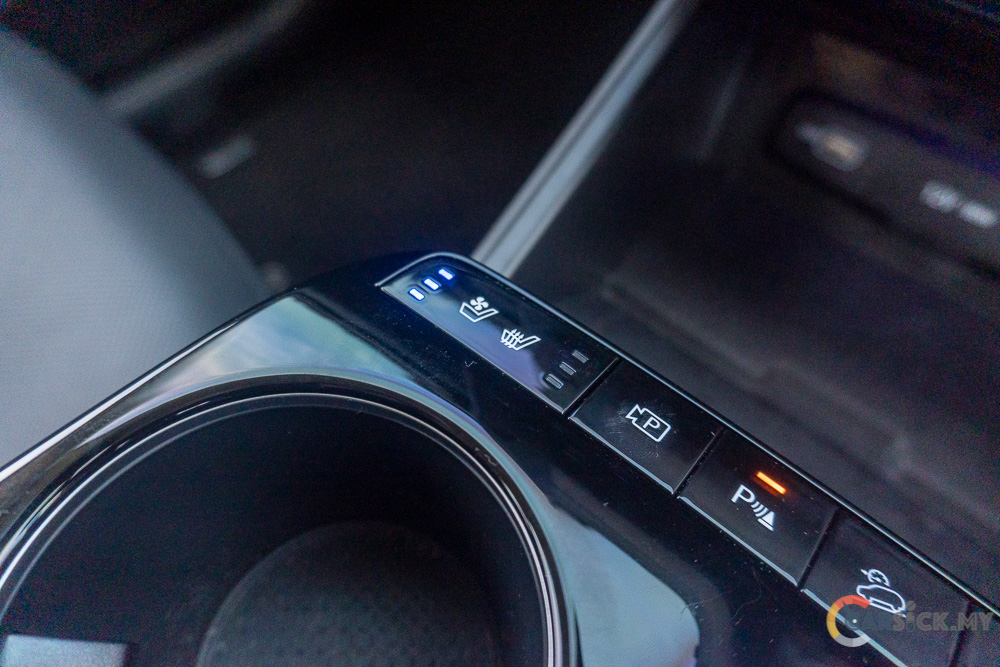
The rear seats are just as comfortable, offering plenty of legroom and headroom, with a well-judged reclining angle. Rear passengers also benefit from two AC vents and two USB-A ports for added comfort on long journeys. The 620L boot is large enough for most needs, and folding down the rear seats expands the cargo space to 1,799L. 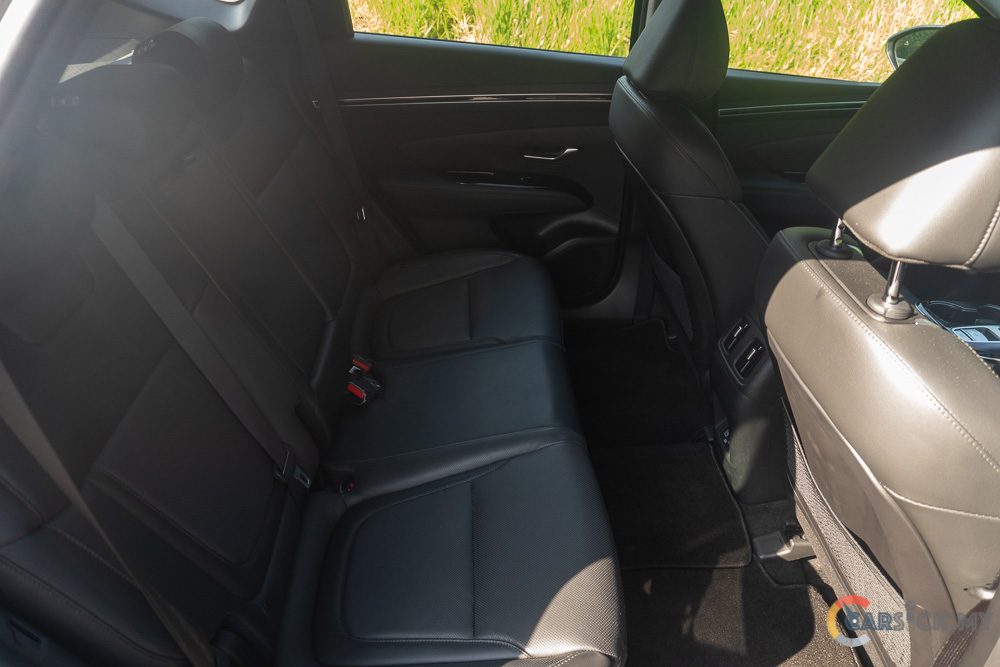
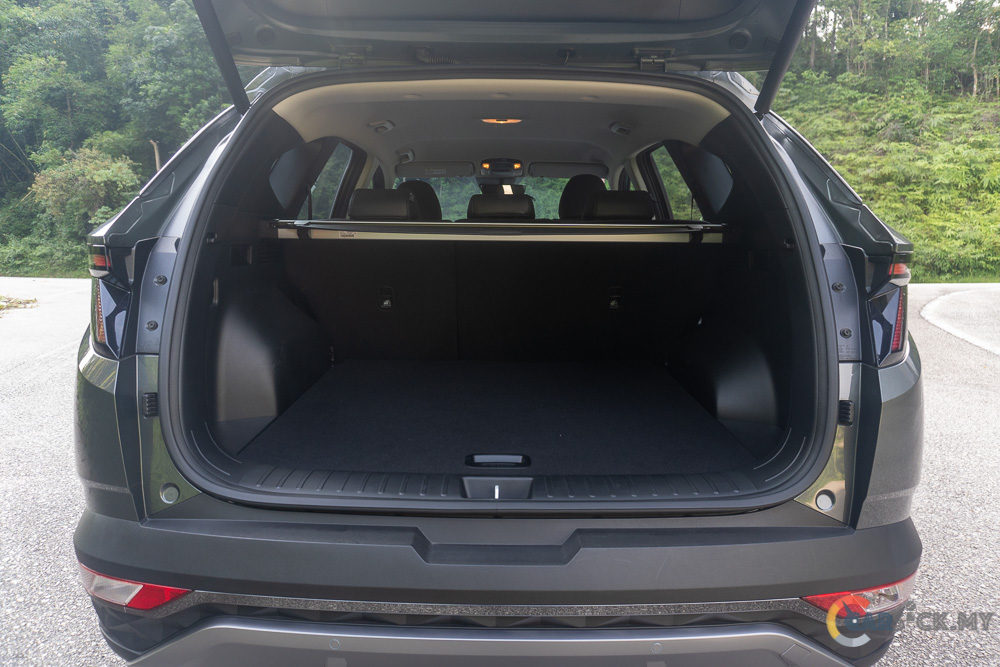
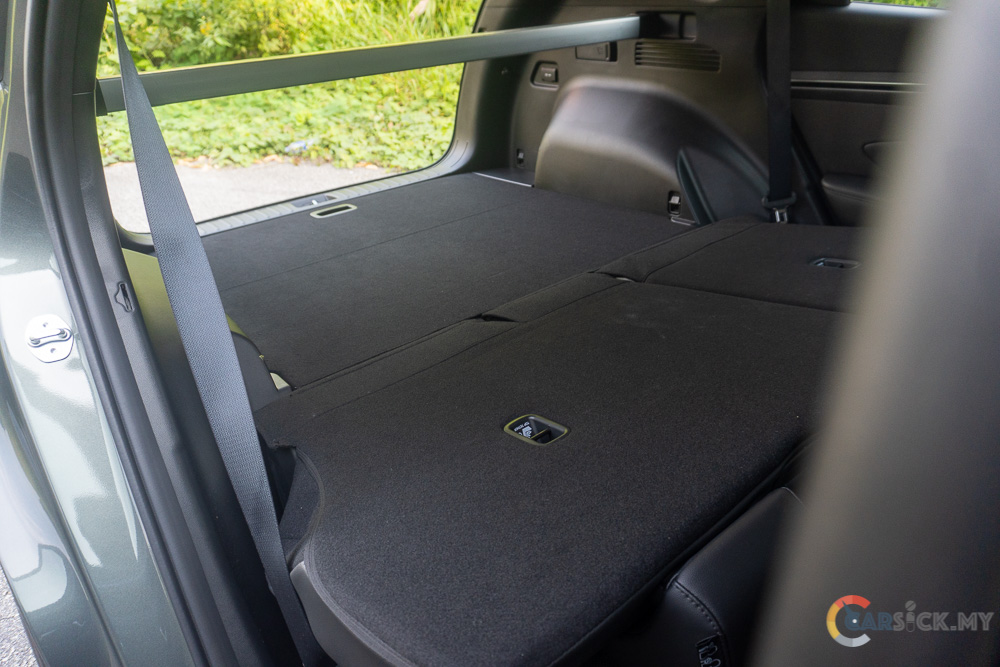
In Malaysia, the Tucson is offered with two engine options. The top-spec variant I’m reviewing here is powered by a 1.6L turbocharged 4-cylinder engine, paired with a 7-speed dual-clutch transmission that sends power to the front wheels. This engine produces 177 hp and 265 Nm of torque. The Tucson can go from 0 to 100 km/h in just 8.8 seconds, with a top speed of 201 km/h.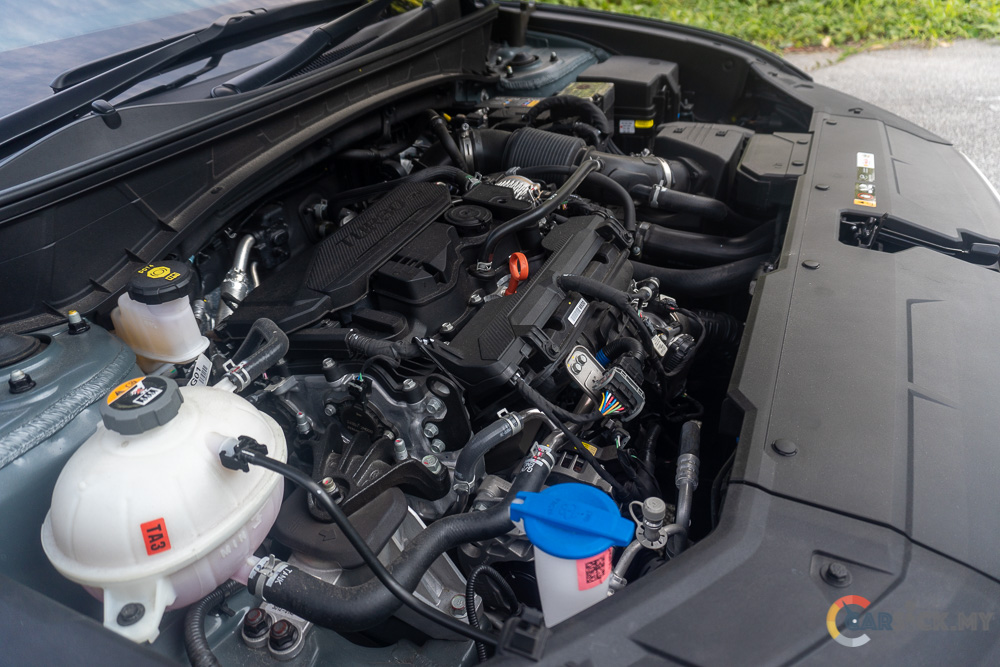
In terms of performance, this engine suits the Tucson well. It has enough power to keep up with traffic, and compared to the 2.0L naturally aspirated engine, this 1.6L turbocharged engine is far superior. The DCT is one of the best on the market, with smooth shifts and intelligent gear selection, making it ideal for city driving and long road trips. I’d also consider this engine reasonably efficient, as I managed to achieve an average fuel consumption of 9.0L/100km.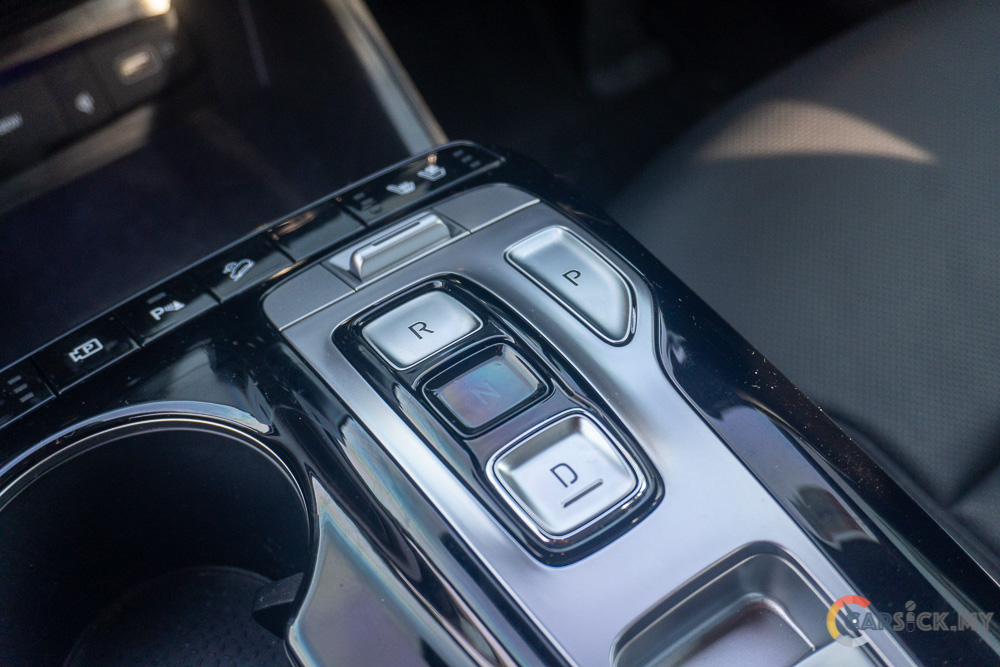
One standout feature of the Tucson is its suspension tuning. It strikes a perfect balance between comfort and stability. The SUV handles bumps and uneven roads well, isolating the cabin from rough surfaces. Unlike some Chinese SUVs with overly soft suspension, the Tucson stays well-planted even at high speeds. Despite the comfortable ride, body roll is minimal during cornering, and the steering is direct, further enhancing the driving experience. For an SUV in this price range, I believe the Tucson has one of the best suspension setups available.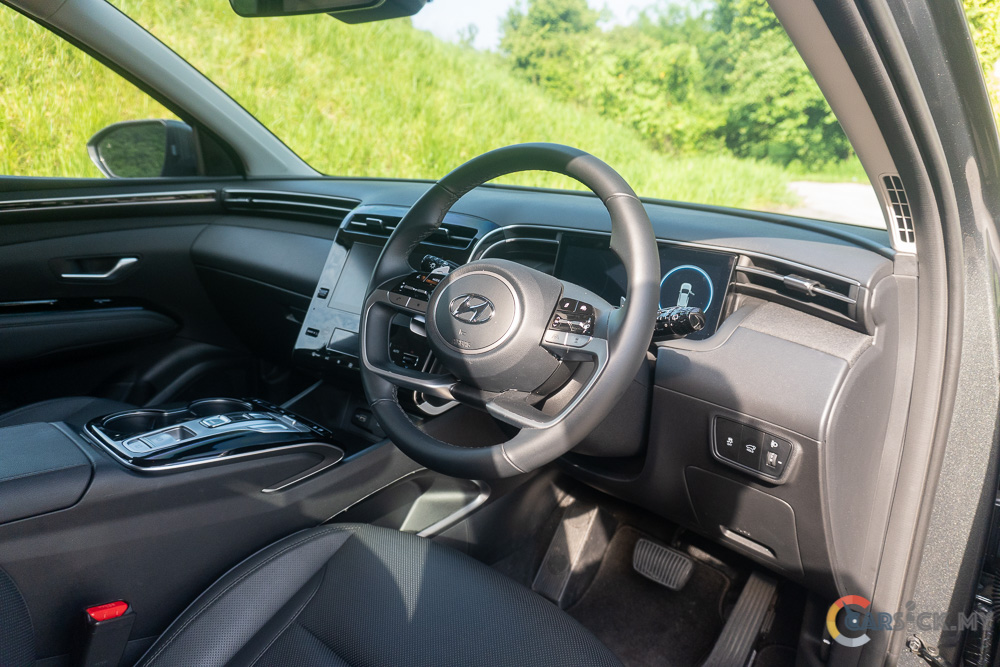
As for the brakes, the Tucson delivers solid braking performance. The brake pedal is easy to modulate, helping the driver maintain smooth control. Additionally, the highest-spec Tucson is equipped with a full suite of advanced driver assistance systems, as expected in 2024. These include Smart Cruise Control (SCC) with Stop & Go, Forward Collision-Avoidance Assist (FCA), Lane Keeping Assist (LKA), Blind-Spot Collision Warning (BCW), and many more. 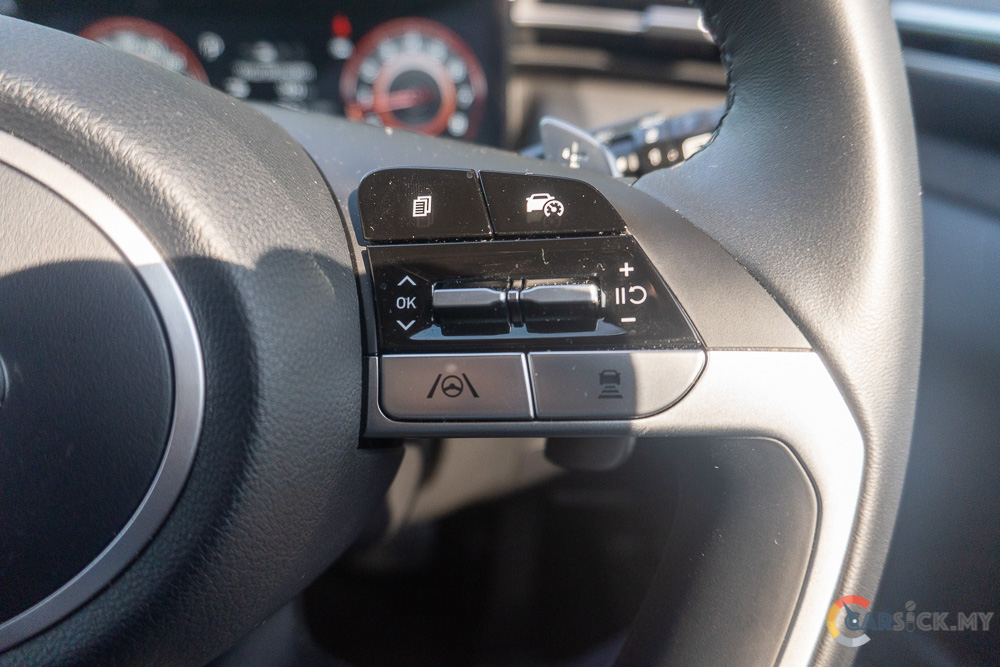
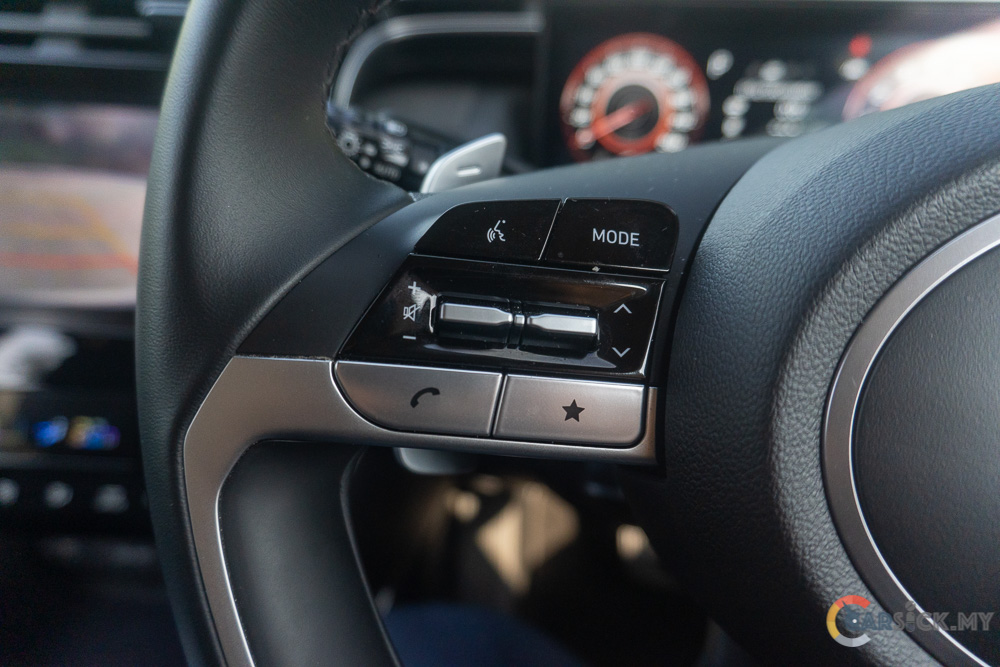
Priced at RM 195,888.00, the Tucson is a very appealing vehicle. I would rank it above the Chinese SUVs, as it feels like a more complete package. However, given the price difference, many Malaysians may opt for cheaper alternatives. Personally, I would choose the Tucson over its competitors because it feels like a properly engineered vehicle. And the best part? Its design will definitely stand out on the road.
Check out the full photo album here. 